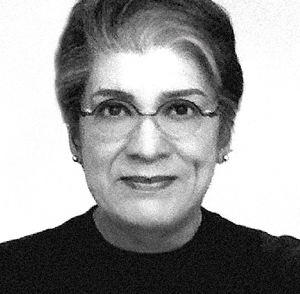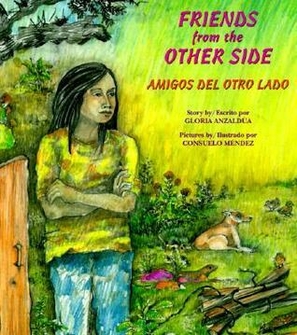The Mission District, commonly known as the Mission, is a neighborhood in San Francisco, California. One of the oldest neighborhoods in San Francisco, the Mission District's name is derived from Mission San Francisco de Asís, built in 1776 by the Spanish. The Mission is historically one of the most notable centers of the city's Chicano/Mexican-American community.

The Royal Chicano Air Force (RCAF) is a Sacramento, California-based art collective, founded in 1970 by Ricardo Favela, José Montoya and Esteban Villa. It was one of the "most important collective artist groups" in the Chicano art movement in California during the 1970s and the 1980s and continues to be influential into the 21st century.

Chicana feminism is a sociopolitical movement, theory, and praxis that scrutinizes the historical, cultural, spiritual, educational, and economic intersections impacting Chicanas and the Chicana/o community in the United States. Chicana feminism empowers women to challenge institutionalized social norms and regards anyone a feminist who fights for the end of women's oppression in the community.

Precita Eyes Muralists Association is a community-based non-profit muralist and arts education group located in the Bernal Heights neighborhood of San Francisco, California. It was founded in 1977 by Susan and Luis Cervantes.
Ester Hernández is a California Bay Area Chicana visual artist recognized for her prints and pastels focusing on farm worker rights, cultural, political, and Chicana feminist issues. Hernández' was an activist in the Chicano Arts Movement in the 1960's and also made art pieces that focus on issues of social justice, civil rights, women's rights, and the Farm Worker Movement.

Judithe Hernández is an American artist and educator, she is known as a muralist, pastel artist, and painter. She is a pioneer of the Chicano art movement and a former member of the art collective Los Four. She is based in Los Angeles, California and previously lived in Chicago.

The Chicano Art Movement represents groundbreaking movements by Mexican-American artists to establish a unique artistic identity in the United States. Much of the art and the artists creating Chicano Art were heavily influenced by Chicano Movement which began in the 1960s.

Friends from the Other Side / Amigos del Otro Lado (1993) is a bilingual (Spanish/English) Latino children's book written by Mexican American/Chicana scholar Gloria E. Anzaldúa and illustrated by Consuelo Méndez Castillo. It is loosely based on Anzaldúa's early life in South Texas and tells the story of a young Chicana girl, Prietita, living near the US-Mexican border who befriends and helps a young Mexican boy, Joaquín, who has recently immigrated.

René Yañez was a Mexican-American painter, assemblage artist, performance artist, curator and community activist located in San Francisco, California. He was a well-known contributor to the arts of San Francisco and is a co-founder of Galería de la Raza, a non-profit community focused gallery that features Latino and Chicano artists and their allies. In the early 1970s, he was one of the first curators in the United States to introduce Mexico's Día de Muertos as a contemporary focus and an important cultural celebration.
Patricia Rodriguez is a prominent Chicana artist and educator. Rodriguez grew up in Marfa, Texas and moved to San Francisco to later pursue an art degree at Merritt College and this is where she learned about the Mexican American Liberation Art Front (MALA-F) and the Chicano Movement. In 1970, Patricia received a scholarship to the San Francisco Art Institute and this is where she met Graciela Carrillo. Together, they created and founded the Mujeres Muralistas, the first Chicana women's mural collective in San Francisco.

Susan Kelk Cervantes is an American artist who has been at the epicenter of the San Francisco mural movement and the co-founder and executive director of the community-based non-profit, Precita Eyes Muralists.

Chicana art emerged as part of the Chicano Movement in the 1960s. It used art to express political and social resistance through different art mediums. Chicana artists explore and interrogate traditional Mexican-American values and embody feminist themes through different mediums such as murals, painting, and photography. The momentum created from the Chicano Movement spurred a Chicano Renaissance among Chicanas and Chicanos. Artists voiced their concerns about oppression and empowerment in all areas of race, gender, class, and sexuality. Chicana feminist artists and Anglo-feminist took a different approach in the way they collaborated and made their work during the 1970s. Chicana feminist artists utilized artistic collaborations and collectives that included men, while Anglo-feminist artists generally utilized women-only participants. Art has been used as a cultural reclamation process for Chicana and Chicano artists allowing them to be proud of their roots by combining art styles to illustrate their multi-cultured lives.
Elba Rivera is a Salvadorian-born artist who concentrates on realism, surrealism, and abstract expressionism. Rivera focuses on uncovering subjects related with human's dismissal for nature with surrealist and abstract expressionist techniques. She is best known for her participation in San Francisco community mural art movements and for the art piece, Family Expectations, which depicts an intricate composition of several women whose appearances indicates family union.
Marta Ayala is a Salvadoran-American painter and a woman muralist in San Francisco. Her work involves experimenting with colors, themes, etc. She is not tied to a single theme, medium or style. The majority of her work revolves around engaging with the community by collaborating together with other artists and teaching classes. She experiments with various colors and uses easily definable lines in her paintings and murals. Ayala's paintings and murals display a mix of colorful images reminiscent of childhood, earthly materials such as rocks and water with a mix of ancient culture. This is the reason for the word "primitive" to describe her work.

Mission Cultural Center for Latino Arts (MCCLA) is an arts nonprofit that was founded in 1977, and is located at 2868 Mission Street in the Mission District in San Francisco, California. They provide art studio space, art classes, an art gallery, and a theater. Their graphics department is called Mission Grafica, and features at studio for printmaking and is known for the hand printed posters. It was formerly named, Centro Cultural de La Mission.
Irene Peréz is a muralist known for her membership in the Latina muralist group, Las Mujeres Muralistas and her contributions to the group mural Maestrapeace, at the Woman's Building in San Francisco, California.
Graciela Carrillo is a Chicana artist and muralist in San Francisco and member of the all-female Chicana/Latina artist group Mujeres Muralistas. She is a co-founder of Galería de la Raza, a gallery utilized to showcase the everyday lives of the Chicano community through art during the Chicano Civil Rights movement through the Chicano muralist movement.

A Chicano mural is an artistic expression done, most commonly, on walls or ceilings by Chicanos or Mexican-American artists. Chicano murals rose during the Chicano art movement, that began in the 1960, with the influence of Mexican muralism and the Mexican Revolution. The murals are an illustration of Chicano’s ethnic pride or a form of activism against police brutality, social issues, political issues, and civil rights issues. It started being done by young Chicano artists in commonly marginalized neighborhoods, schools, and churches, demonstrating cultural art and ideas. The murals are characterized by their art style of bright color, religious symbols, and cultural references to Mexican and Mexican American history. Chicano murals have been and are historically found in the Southwest states like Texas, Colorado, and most famously, California, where the national landmark Chicano Park is located. The popularity of the Chicano Murals has allowed a sense of community, culture, activism, and storytelling about elements of being Chicano. Various states are currently looking to preserve and restore some murals as they carry historical meaning for the geographical community and the Mexican-American community.
Xochitl Nevel Guerrero is a Chicana visual and public artist. She is known for her murals, masks and tile art.
Xochitl Nevel Guerrero is a Chicana artist who specializes in making murals, paintings, gourd decorations, masks, and mosaic/tile art.











